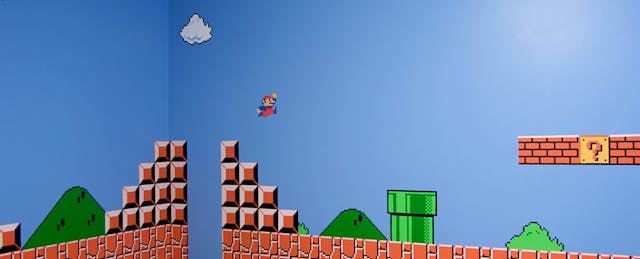I’m a big fan of the constructive use of games in education. After all, games are engaging and, potentially, connected to rich, authentic activities. Traditional schooling is often neither. Digital games can capture the process of learning. Traditional assessment is typically about the outcome of learning. Gaming promotes productive failure (or at least players persevere and fail productively in the games they play). Schooling can discourage learning from mistakes. Games hold great promise.
That promise for digital games to transform learning has been with us for a while. I remember attending a conference on video games at the Harvard Graduate School of Education (where I teach a course called Innovation by Design) and hearing how games would engage students in learning and foster the development of spatial and reasoning skills. Others fretted about desensitization to violence and games coming at the expense of other valuable child experiences. That conference was in 1983 (read what the NY Times had to say about it). Thirty-one years later the same concerns and benefits are being debated.
Meeting the recurring promise of digital games requires thoughtful and intentional integration into the curriculum. David Perkins, an eventual Harvard colleague and one of the speakers at that 1983 conference, offered some guiding wisdom that we should still be heeding. He warned of “contextual welding.” The wonderful skills and strategies that students develop playing games are likely to stay welded to those games unless we actively support the transfer of that learning. This issue of transfer is also relevant for all those cognitive enhancement games advertised everywhere. Sending your students off to play games may make them happy and look engaged, but getting the learning to spread where you want it to go takes work.
So what can we do to make games more effective for learning. Here are three suggestions:
- Keep the gap between the game skills and the real world (including the real world of school) skills small. In other words make sure what happens in the game looks a lot like what you want students to do in the classroom. If you want students to get good at solving equations like 3x + 4 = 12, point them to games that share that format. But won’t those be boring games? Not necessarily. Sushi Monster is pretty cute, and the math is transparent. Remember, repetitive practice is tedious, but it’s how we get good at things. In sports we invent all kinds of little games to add a bit of spice to repetitive tasks. If students see these games as vehicles for helping them get better for winning the bigger curriculum game (and they care about passing the class) then they’ll be even more motivated to play.The many games in MATH 180’s Brain Arcade are integrated into the blended curriculum. Learn the math to get better at the games. Play the games to get further in the curriculum.
- Use the games intentionally as reference models to support the curriculum, particularly ideas that are hard to conceptualize. Supply and demand, moral conflict, inverse relationships, and causation vs. correlation are all examples of concepts that can be difficult to understand in the abstract. Examples help, and examples that are dynamic, that allow you to see how the concepts work under different conditions, are particularly helpful. Games and simulations can provide these dynamic or “runnable mental models”. Even one of many simple versions of Lemonade Stand can be a vehicle for helping students grasp supply & demand. What happened in the game when you made a lot of lemonade (high supply) but a cool, rainy day kept customers away (low demand)? How did price affect behavior? As the models get more complex, as with something like SimCity, the need for teacher support becomes even more critical. You can’t depend on students making the connections themselves. Purposefully integrating the game into the iterative learning process – playing around in a game, learning some concepts, trying the concepts out in the game, reflecting on the game and concept connection, trying something new in the game, and so on –will help make the learning meaningful and deep.
- Going even further, you can look to make the game and the curriculum the same. Military, medical, and even car racing simulations are designed to mimic the real life skills, tools, and situations soldiers, doctors, and even race car drivers experience. These games and the curriculum are built together. The game incorporates the instructional objectives and strategies, supporting the training of the learner. If the simulation game is built correctly, getting good at the game means getting good at the real thing. These realistic, immersive environments are just emerging in the K-12 world, but they offer a way to directly connect the real world to an enhanced virtual one. Even so, reflection still makes a difference and enhances transfer across contexts.
The promise of games I heard back in 1983 remains. Technology has enhanced the possibilities, but good implementation, where teachers intentionally incorporate the games – from board to virtual – into the curriculum, is at the root of leveraging the potential into deeper learning for students.


